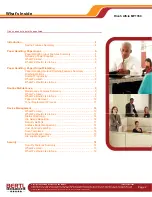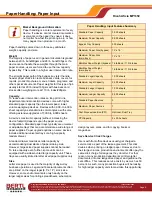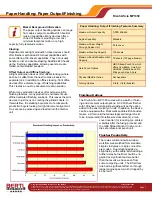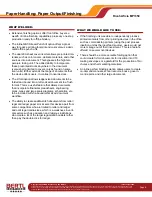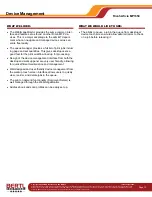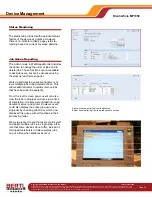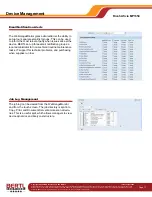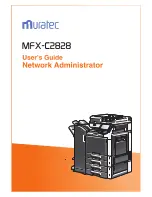
Copyright © 2006 MCA Internet, LLC dba BERTL.
13 November 2006
All Rights Reserved. The license under which this document is made available and applicable law prohibit any reproduction or further transmission of any portion of this document. This
document may only be viewed electronically through the www.BERTL.com Web site and may not be stored in electronic or hard copy format. Any reproduction of trademarks is strictly
prohibited. BERTL accepts no responsibility for any inaccuracies or omissions contained in this document.
Page 5
Ricoh Aficio MP1350
Market Background Information:
Paper handling is a core requirement of every
device. If a device cannot create documents a
user wants on the paper they need, it does
not matter how fast the print engine is, or how
many pages it can produce in a month.
Paper handling comes down to three key attributes:
weight, capacity, and size.
Weight
The majority of paper used in general circulation is graded
between 20 lb. bond/80gsm and 28 lb. bond/105gsm. If a
device cannot handle these weights through the main
paper sources, users are forced to use the low capacity
bypass tray. This results in a higher user intervention rate.
The straight paper path of the bypass tray lets it handle
heavier paper stocks to create business cards, covers for
reports, product brochures, menus, tickets, programs, and
other special documents. Paper weights for this type of job
usually start at 90 lb. index/163gsm with business card
stocks often weighing more at 110 lb. index/200gsm.
Capacity
To reduce user intervention rates on long print runs,
departmental and production devices come with higher
standard paper capacity than the lower speed, lower
volume workgroup devices. Devices with 3,000- to 4,000-
sheet capacity as standard are commonplace, with some
offering extensive upgrades of 7,000 to 8,000 sheets.
A device’s maximum capacity (without increasing the
device footprint) depends upon the paper source
configuration. Standard paper trays typically are universal
or adjustable trays that can accommodate a wide range of
paper supplies. Paper upgrade options on some devices
include additional universal trays or a high-capacity
tandem drawer.
A tandem drawer maximizes letter capacity by
accommodating dual stacks of paper side-by-side.
However, larger-sized paper supplies cannot be loaded.
To raise capacity even further, some units can be
equipped with a side-mounted large capacity unit. These
trays are usually limited to letter sized paper supplies only.
Size
Letter size paper is used in the majority of day-to-day
business operations. Legal and financial documents often
are printed on the longer legal (8.5” x 14”) stock size.
However, some environments also rely heavily on the
larger ledger sizes for printing spreadsheets, schematics,
design layouts, plans, and for copying books or
magazines.
Save Service Click Charges
Users with front office devices usually get charged a
service click as part of the lease agreement. This click
doubles when printing on ledger paper. However, due to
their large volumes, production environments often pay the
same click charge for ledger as they do letter. For that
reason, many production departments print two letter
documents onto one ledger-sized paper and guillotine the
sets offline. This reduces service costs by as much as 50
percent. As such, many production buyers will be looking
for high ledger capacity units to maximize this opportunity.
Standard Paper Capacity
3,000 sheets
Maximum Paper Capacity
8,050 sheets
Bypass Tray Capacity
500 sheets
Maximum Paper Size (bypass)
13” x 18”
Maximum Paper Size
(main trays)
13” x 18”
Min/Max Paper Weight (bypass) 16 lb Bond / 110 lb Index
Min/Max Paper Weight
(main trays)
16 lb Bond / 110 lb Index
Standard Legal Capacity
1,000 sheets
Maximum Legal Capacity
5,500 sheets
Standard Ledger Capacity
1,000 sheets
Maximum Ledger Capacity
5,500 sheets
Standard Paper Sources
3
Maximum Paper Sources
7
Post Process Insertion (PPI)
Optional, Dual Tray
PPI Capacity
2 x 200 sheets
Paper Handling: Input Features Summary
Paper Handling: Paper Input


